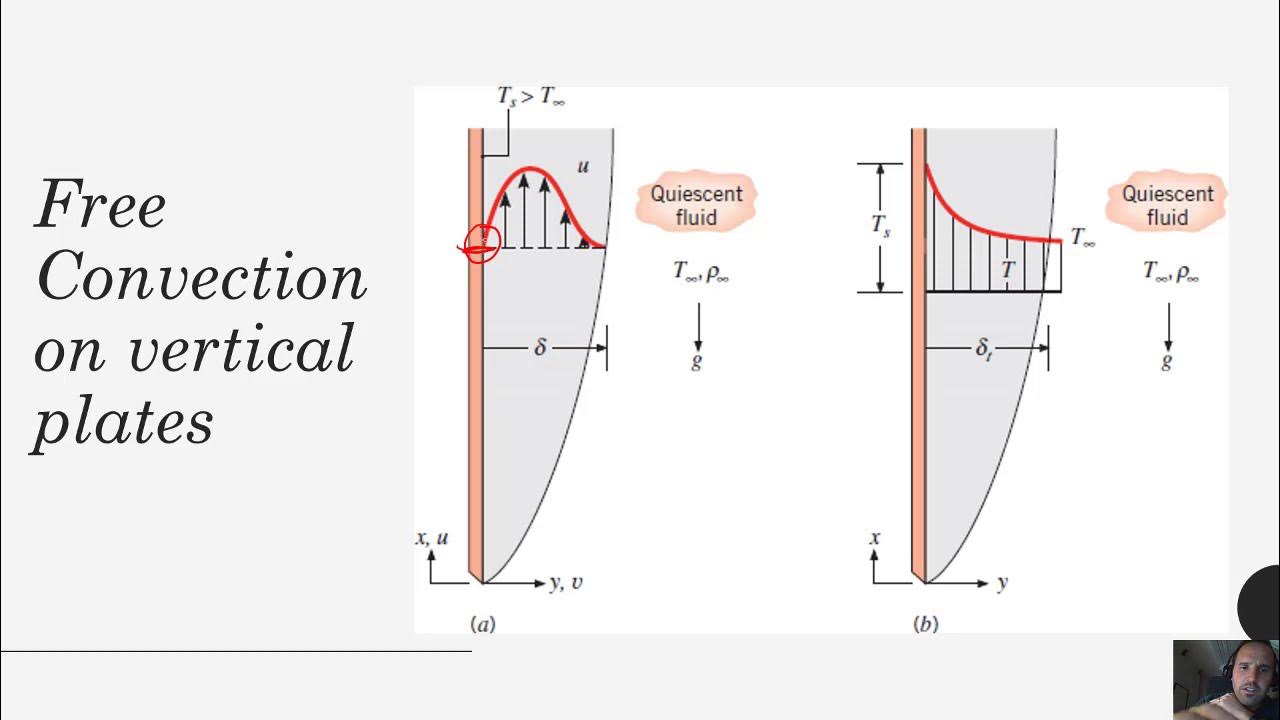Analysis of Temperature Distribution profile of pin fin | Practical No.8 | GTU | 3151909
Summary
TLDRThis practical session introduces students to key experiments in heat transfer, focusing on natural and forced convection. The session covers the methodology for measuring temperature distributions, heat flux, and convection coefficients using materials like aluminum and brass. Students will gather data, perform calculations to determine heat transfer rates, and analyze the differences in convection types. The session aims to provide hands-on experience in understanding thermal processes, offering practical insights into thermal conductivity, dynamic viscosity, and heat transfer behavior. A final report will summarize the findings and analyze experimental results.
Takeaways
- 😀 Welcome students to the practical session on temperature distribution under natural and forced convection conditions.
- 😀 You will be performing two experiments to determine temperature distribution profiles in different materials.
- 😀 The first experiment involves testing under natural convection, and the second under forced convection conditions.
- 😀 Experimental setup includes aluminum and other materials, thermocouples for measuring temperature, and manometers for pressure difference.
- 😀 You are required to measure and record temperature at multiple points using thermocouples and note the corresponding readings.
- 😀 The heaters' voltage and current settings must be adjusted carefully to ensure accurate temperature distribution results.
- 😀 During the experiment, monitor the voltage, current, and temperature distribution as these will help in understanding the heat transfer mechanisms.
- 😀 Calculate temperature distributions at various points and compare natural vs. forced convection results.
- 😀 Data collection involves recording temperature readings and measuring pressure differences across the setup using manometers.
- 😀 A final analysis will involve comparing theoretical models with experimental data to identify discrepancies or match trends.
- 😀 Be cautious when handling electrical equipment, ensure proper safety protocols, and write a detailed report of your findings, including graphs or charts.
Q & A
What is the main objective of the practical session described in the script?
-The main objective is to determine temperature distribution profiles under different conditions of natural and forced convection, using various materials such as aluminum and brass. The practical session involves measuring voltage, current, and temperature to calculate physical properties such as viscosity, density, and thermal conductivity.
What are the two different types of convection mentioned in the practical session?
-The two types of convection mentioned are natural convection and forced convection. In natural convection, heat transfer occurs due to the natural movement of the fluid caused by temperature differences, while in forced convection, an external force like a pump or fan is used to circulate the fluid.
What is the significance of using thermocouples in the experiment?
-Thermocouples are used to measure temperature at various points in the experimental setup. They provide accurate temperature readings, which are essential for determining the temperature distribution profiles and for calculating the effectiveness of the convection process.
Why is aluminum chosen as one of the materials for this experiment?
-Aluminum is chosen because of its good thermal conductivity properties, which allow it to effectively transfer heat. This makes it ideal for studying temperature distribution under both natural and forced convection conditions.
What is the role of voltage and current in the experiment?
-Voltage and current are used to power the heating elements in the experiment. By varying the voltage and measuring the corresponding current, the amount of heat generated can be controlled, which is necessary for studying heat transfer and convection.
What is meant by 'temperature distribution profile' in the context of this experiment?
-A temperature distribution profile refers to the variation of temperature across different sections of the experimental setup, such as along a heated rod or plate. The profile helps to understand how heat is transferred through the material under different convection conditions.
What calculations are students expected to perform during the practical session?
-Students are expected to calculate the temperature distribution profiles, thermal conductivity, and other material properties such as viscosity and density. They will also calculate the effectiveness of the convection process and compare experimental results with theoretical values.
How does the experimental setup help in understanding convection heat transfer?
-The experimental setup provides a controlled environment to study how heat is transferred in fluids. By observing temperature changes under different conditions (natural vs forced convection), students can better understand the principles of heat transfer and how variables like material properties and fluid flow affect the process.
What is the purpose of measuring the temperature at various distances during the experiment?
-Measuring temperature at various distances helps to map the temperature gradient across the experimental setup, allowing for the construction of a detailed temperature distribution profile. This data is crucial for analyzing heat transfer rates and calculating material properties.
What does the mention of 'experimental difficulties in natural convection' suggest about the practical session?
-It suggests that natural convection can be difficult to analyze due to factors like varying fluid flow and heat transfer conditions. The session may involve troubleshooting and fine-tuning the setup to account for these complexities, making it an essential part of understanding real-world convection processes.
Outlines

هذا القسم متوفر فقط للمشتركين. يرجى الترقية للوصول إلى هذه الميزة.
قم بالترقية الآنMindmap

هذا القسم متوفر فقط للمشتركين. يرجى الترقية للوصول إلى هذه الميزة.
قم بالترقية الآنKeywords

هذا القسم متوفر فقط للمشتركين. يرجى الترقية للوصول إلى هذه الميزة.
قم بالترقية الآنHighlights

هذا القسم متوفر فقط للمشتركين. يرجى الترقية للوصول إلى هذه الميزة.
قم بالترقية الآنTranscripts

هذا القسم متوفر فقط للمشتركين. يرجى الترقية للوصول إلى هذه الميزة.
قم بالترقية الآنتصفح المزيد من مقاطع الفيديو ذات الصلة

Heat Transfer - Chapter 9 - Conceptual Introduction to Natural (Free) Convection)

Pendahuluan - Perpindahan Kalor dan Massa

SUHU, KALOR, DAN PEMUAIAN: IPA SMP KELAS 7

ILMU BIOMEDIK DASAR (TERMOFISIKA DAN PEMELIHARAAN ALAT KEPERAWATAN)

FISIKA KELAS XI | SUHU DAN KALOR (PART 5) - PERPINDAHAN KALOR Konduksi, Konveksi, dan Radiasi

Materi-Perpindahan Kalor Kelas 7 SMP
5.0 / 5 (0 votes)
